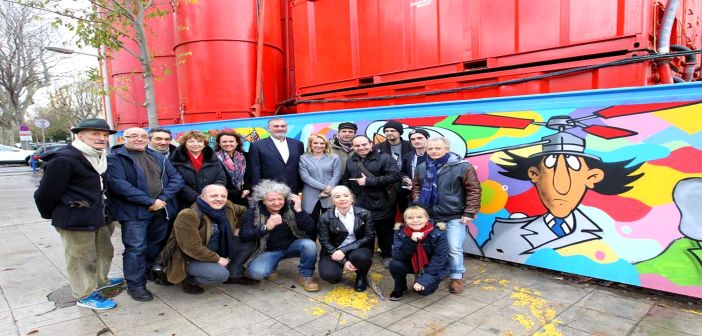In order to support the construction of the West-East line, the City wanted to seize the opportunity of these works to enliven the neighborhoods crossed by the construction site by offering spaces for artistic expression.
As the work progressed, artists were invited into the areas of the City affected by the route and introduced a vibrant contemporary artistic presence into the urban landscape, which continues to grow.
Today, numerous neighborhoods have been invested: from the port to the rue de France, passing through the boulevard Victor Hugo and not forgetting the square Durandy, the Alsace Lorraine garden…
A true urban artistic promenade, this initiative reshapes the nature of movement with the realization of the West-East line.
This approach is part of a broader policy that the municipality wishes to develop in terms of urban art.
More than ever, the Nice urban landscape is now marked by a significant contemporary presence that anchors Nice in the 21st century.
“The Nine Oblique Lines” by Bernar Venet on the quai des Etats-Unis or the sculptures by Jaume Plensa on Place Masséna, brilliantly illustrate this reality.
Similarly, the invitation extended to artists to intervene on the tramway construction fences further establishes Art in the city.


